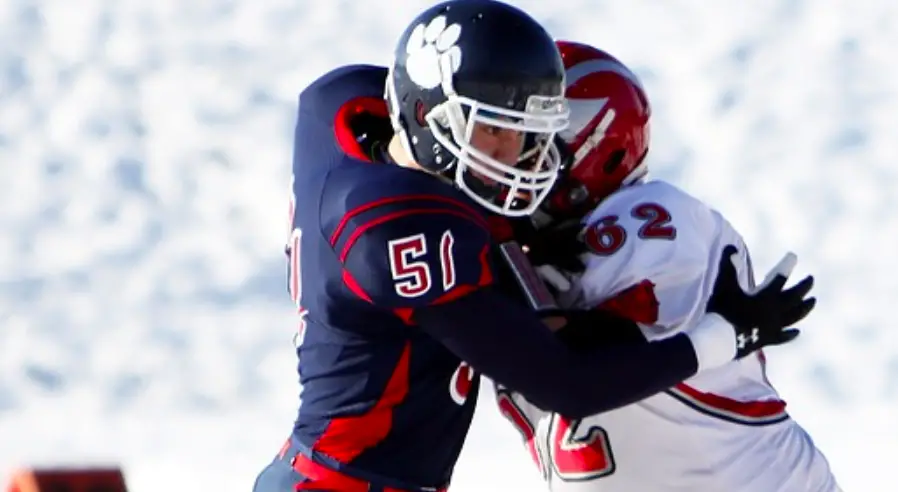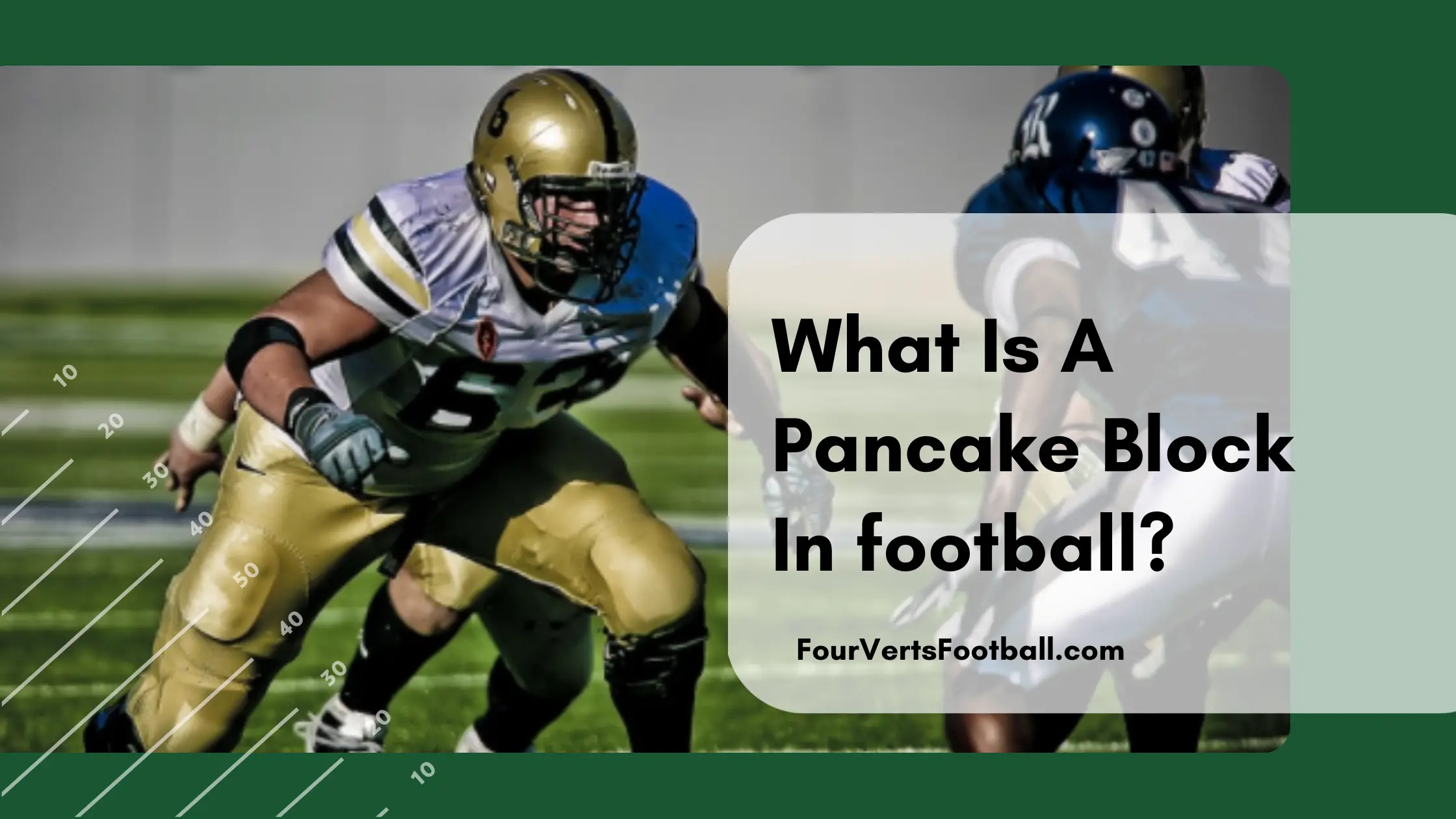A pancake block in football occurs when an offensive player blocks a defender with so much force that the defender is laid flat on their back.
A pancake block is the holy grail of blocks for offensive lineman. As a blocker, it is rare to have a play that is going to stick out on the game tape. A pancake block is one of those plays.
How To Perform A Pancake Block
Now that you know what a pancake block is it is time to learn how to perform one.
Set Up In Three-point Stance
The first step in performing a pancake block is to get into your typical three-point stance to start the play.
Place Your Weight Slightly Forward
When you get into this stance you are going to want to put a little more weight forward than usual. This will allow you to come out of your stance faster and with more forward momentum.
Though be sure not to be too obvious with your weighting as defensive players may catch on.
Explode out of the stance
Exploding out of the stance is one of the most important aspects of a pancake block. This is where you gain your speed. To explode out of the stance effectively you will have to be able to effectively roll your hips.

Get Under Opponents Pads
Next, you are going to want to target your opponent under their pads. Remember to pancake block someone you have to lift them off their feet.
This means you are going to want to have a lower center of gravity than your opponent when contact is made. As they say, low man wins.
Push With Entire Body
Next, you are going to want to push with your entire body. Your arms and shoulders should not be doing the bulk of the lifting as this will be done by your legs and core.
Follow Them Into The Air
As your opponent begins to lose his footing be sure to follow him into the air. Keeping the block going after the player loses his footing is essential to finishing off a pancake block.
Come Down On top Of Them
Next, you are going to want to come down on top of the opposing player. This portion of the block is what really devastates the defender. If you are able to land on top of the player after pancaking him he will know not to mess with you for the rest of the game.
On What Plays To Pancake Blocks Occur
One thing you need to know is that you aren’t going to be able to layout a pancake block on each play. When in pass protection your backwards momentum is going to make it almost impossible to pancake block an opposing player.
This is why there are certain plays in which pancakes are much more effective. Running plays are the most effective plays for pancake blocking. The reason for this is that the offensive players are going to have forward momentum.
Not to mention a lineman running downfield on a passing play is going to earn you an illegal snap infraction if the ball has not already been thrown.
When a guard pulls around the formation is another situation in which pancakes are common. This is because the guard will often have a few steps to gain some speed prior to making contact with the defender.
This principle is also true for screen passes as offensive linemen will be able to block in open space. These plays will also often have a lineman blocking a defensive back, a mismatch that often creates a pancake block.
What Positions Tend To Generate These Blocks?
When it comes to laying out pancake blocks there are a few positions that lead the way. The position that most often generates these blocks is the offensive guard.

Guards
There are two reasons why these players tend to earn more pancake blocks than other players on the offensive line. One of the reasons is that guards are often going to pull from the line and run downfield to block.
This presents a great opportunity for a pancake block as the guard is able to get some momentum before he lays out the defender. When these heavy players are running downhill it is much easier for them to put a defender on their back.
Additionally, when guards get downfield they are blocking much smaller players. Instead of defensive tackles which tend to be the biggest players on the field the guards will block linebackers and defensive backs.
These players are noticeably lighter than defensive tackles and therefore are much easier to pancake block.
Guards are also able to double team most interior rushers. By doubling teaming a defender these players are often able to hit the player from the side resulting in a pancake block.
Tackles
The offensive tackle position is another which is known for laying out pancake blocks. These players line up on the outside of the formation and typically play one on one against the outside rusher.
It is difficult for an offensive tackle to generate a pancake block when in pass protection against a single outside rusher.
But when a tackle is able to get moving on a running play is when they are able to generate some massive blocks.
Similar to a guard these players are able to run downhill giving them more power in their blocks. This makes it especially easy to pancake a defender if he is attempting to run past you from the opposite direction.
A collision of two players going opposite directions usually benefits the heavier player. Which is almost always going to be the offensive tackle.
Tight Ends
Tight end is another position in which players are able to lay out some big blocks against the defenders. Due to their smaller size when compared to o-lineman tight ends can struggle to generate enough power for a pancake block.
For this reason, pancake blocks tend to occur when a tight end catches a player off guard or they are an especially good blocking tight end.
When a tight end is able to chip block a defensive end this can be an especially effective way to put him on his back.
The defensive end in this situation is often preoccupied with the offensive tackle and fails to prepare himself for a block from the tight end.
Additionally tight ends will often be tasked will blocking defensive backs like safeties. When this occurs larger and stronger tight ends are sometimes able to pancake the safety due to their advantage in size and strength.
That is all on pancake blocks in football read up on cut blocking in football or chop blocking.

